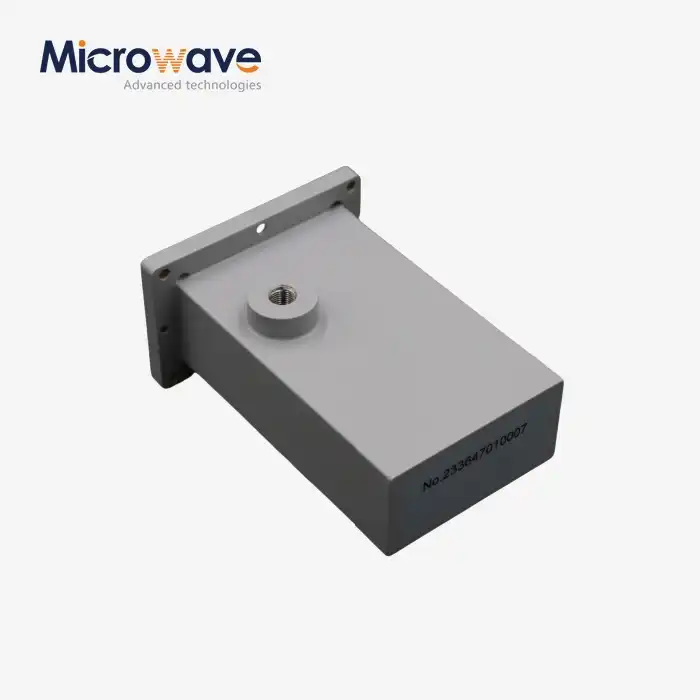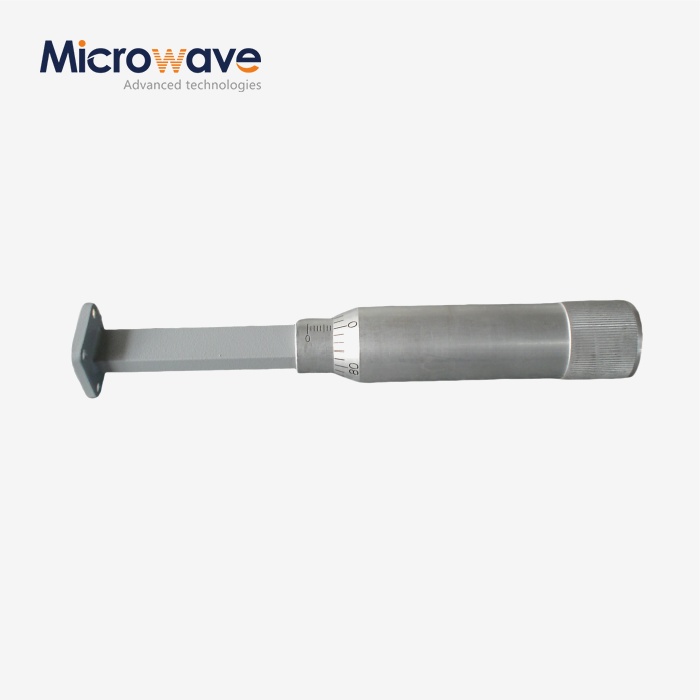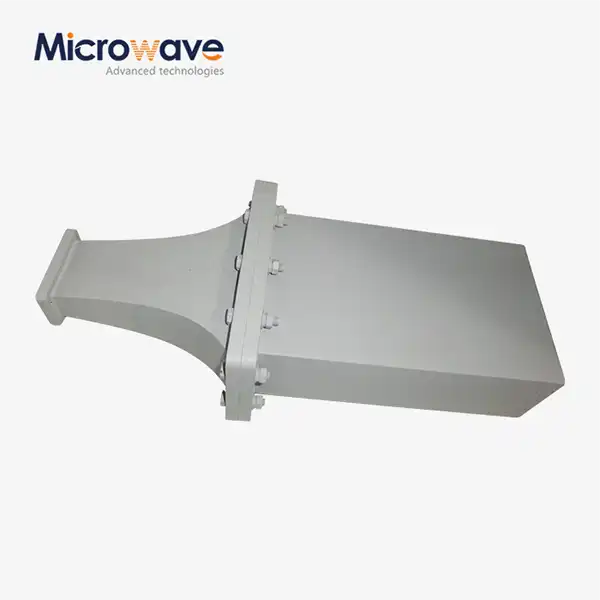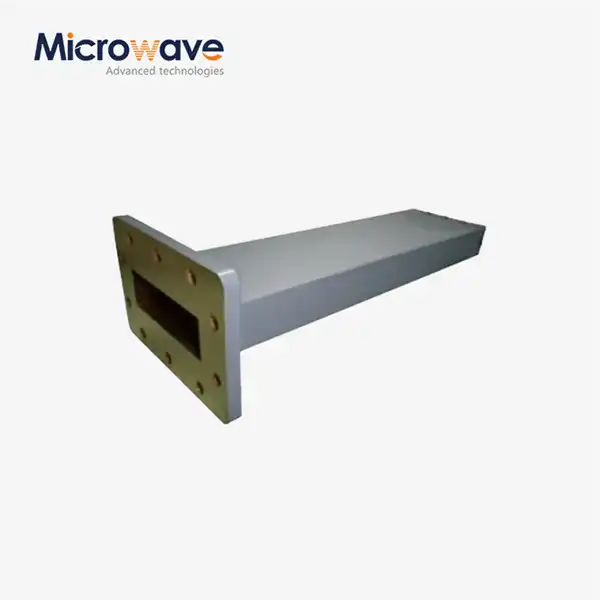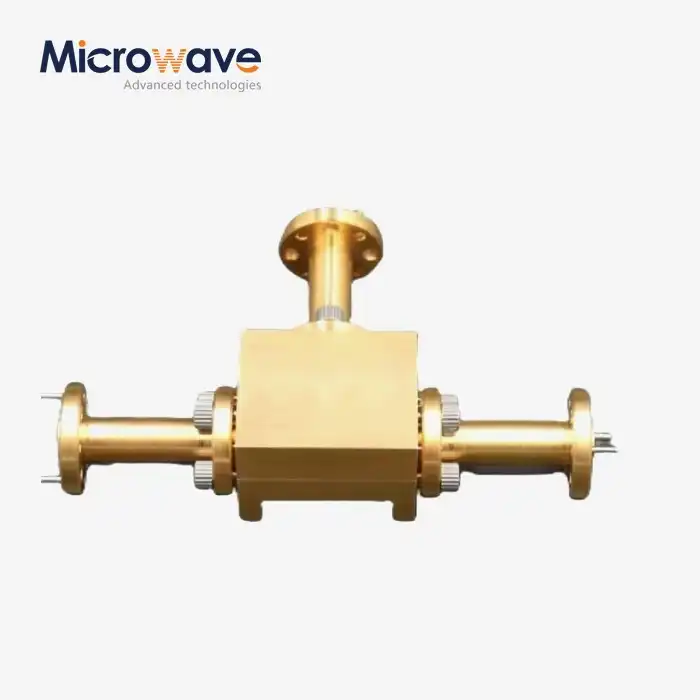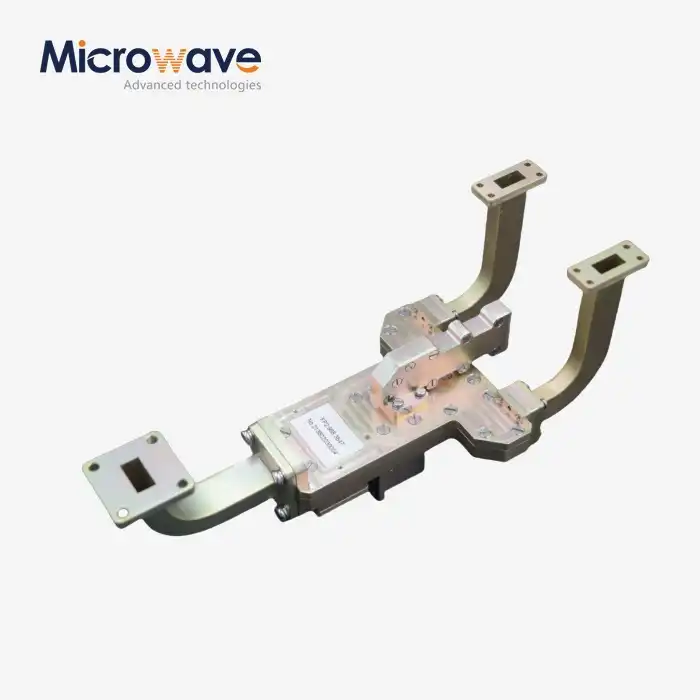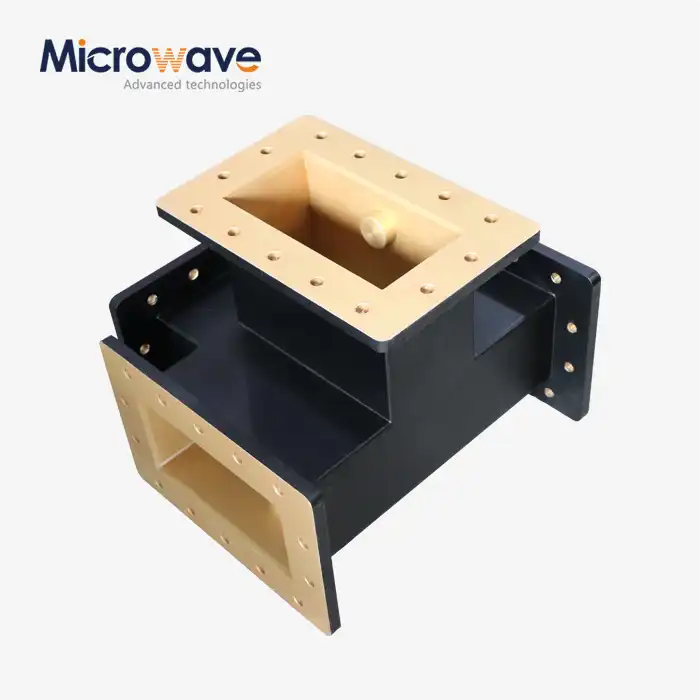In what types of waveguide systems is a Waveguide Sliding Termination most commonly used?
Waveguide sliding terminations are essential components in modern microwave and RF systems, serving as specialized load devices designed to absorb electromagnetic energy with minimal reflection. These precision-engineered devices are most commonly implemented in systems requiring high accuracy measurements, impedance matching verification, and complex signal integrity validation. Waveguide Sliding Terminations are particularly valuable in applications where standing wave ratios must be precisely characterized or where reflections need to be systematically eliminated. Their unique sliding mechanism allows engineers to vary the termination position along the waveguide, effectively changing the phase relationship of any residual reflections and enabling more accurate system calibration and measurement across telecommunications, aerospace, defense, and scientific research fields.
Critical Applications for Waveguide Sliding Terminations in Modern Systems
Precision Measurement and Calibration Environments
Waveguide Sliding Terminations serve as indispensable tools in metrology laboratories and precision measurement facilities where accuracy is paramount. These specialized components enable engineers to establish reference standards and calibrate complex measurement instruments with exceptional precision. In network analyzer setups, for instance, a Waveguide Sliding Termination creates a controlled environment for verifying system performance by allowing technicians to systematically vary the termination position along a 180° or 360° sliding path. This movement effectively changes the phase relationship of any residual reflections, permitting more comprehensive error correction algorithms to be applied. Advanced Microwave Technologies Co., Ltd. designs these terminations to operate across frequencies up to 110 GHz, making them suitable for cutting-edge measurement applications requiring extreme precision. The optimized signal integrity provided by these terminations ensures minimal reflection coefficients, typically below -40 dB, which translates to more reliable and repeatable measurements in sensitive systems. Their implementation in calibration chains has become standard practice for institutions requiring traceable measurement uncertainties and performance verification of high-frequency components and systems.
Radar and Defense Communication Networks
The demanding operational requirements of radar and defense communication networks make Waveguide Sliding Terminations essential components in these critical systems. Military-grade radar installations utilize these specialized terminations during system testing and validation to ensure optimal performance under various operational scenarios. The ability of a Waveguide Sliding Termination to handle high-power microwave signals while maintaining low reflection characteristics makes them invaluable for characterizing radar system performance parameters accurately. Defense communication networks, particularly those operating in X-band (8-12 GHz) and Ku-band (12-18 GHz) frequencies, implement these terminations at critical junction points to minimize signal degradation and maintain secure, reliable connections. Advanced Microwave Technologies Co., Ltd. manufactures these terminations with durable, corrosion-resistant materials specifically designed to withstand harsh environmental conditions often encountered in defense applications. The sliding mechanism, offering either 180° or 360° movement range, allows defense technicians to validate system performance across multiple operational states, ensuring that vital communication links remain stable even when subjected to electromagnetic interference or signal anomalies. This capability is particularly critical in electronic warfare applications where signal integrity directly impacts mission success and operational security.
Research and Development Test Benches
Research and development facilities heavily rely on Waveguide Sliding Terminations as fundamental components in their test benches and experimental setups. These specialized terminations provide researchers with controlled impedance environments for developing and testing novel microwave and millimeter-wave technologies. In R&D laboratories developing next-generation communication systems, Waveguide Sliding Terminations serve as reference loads against which prototype components can be evaluated with high confidence. The broad frequency range support offered by Advanced Microwave Technologies' terminations (extending up to 110 GHz) makes them particularly valuable for emerging applications in 5G, 6G, and millimeter-wave research. When implementing these terminations in test benches, researchers can systematically characterize the behavior of experimental circuits under various loading conditions, collecting comprehensive data sets that guide design refinements. The low-loss characteristics of modern Waveguide Sliding Terminations, typically less than 0.1 dB insertion loss, ensure that measured performance accurately reflects the actual behavior of devices under test rather than being masked by measurement system limitations. This attribute is especially valuable when characterizing components with marginal performance specifications or when validating simulation models against empirical measurements in academic and industrial research settings.

Performance-Critical Industries Utilizing Waveguide Sliding Terminations
Satellite Communication Ground Stations
Satellite communication ground stations represent one of the most demanding applications for Waveguide Sliding Terminations, where signal integrity directly impacts operational capabilities and service quality. These mission-critical facilities employ Waveguide Sliding Terminations during system commissioning, regular maintenance procedures, and performance verification cycles to ensure optimal functionality of their high-capacity communication links. The terminations play a crucial role in eliminating unwanted reflections that could otherwise compromise the clarity and reliability of transmitted and received signals. Advanced Microwave Technologies Co., Ltd. provides specialized versions of these terminations designed explicitly for satellite communication applications, featuring enhanced thermal stability to accommodate the continuous operation cycles typical in these environments. The precision-engineered sliding mechanism, available in both 180° and 360° travel versions, allows ground station engineers to perform comprehensive system characterization across different operational conditions. This capability ensures that uplink and downlink pathways maintain their specified performance parameters even as environmental conditions fluctuate. Furthermore, the high-quality materials used in manufacturing these terminations ensure minimal signal degradation and consistent performance characteristics, critical factors when handling sensitive communication signals that often operate with minimal signal margin. Their implementation in earth stations handling Ka-band and Q/V-band satellite communications has become increasingly important as these higher frequency bands are exploited to deliver greater bandwidth and capacity to users.
Aerospace Testing Facilities
Aerospace testing facilities implement Waveguide Sliding Terminations in their sophisticated microwave test systems to validate the performance of flight-critical communication and navigation equipment. These specialized facilities subject aerospace components to rigorous testing protocols that simulate extreme operational conditions, requiring measurement systems with exceptional stability and reliability. Waveguide Sliding Terminations from Advanced Microwave Technologies Co., Ltd. provide the precision loading characteristics necessary for accurately characterizing radar altimeters, weather radar systems, and satellite communication terminals installed in modern aircraft. The ability to adjust the termination position along a controlled sliding path enables test engineers to identify and quantify any position-dependent performance variations that might affect system operation during flight. Aerospace qualification testing requires components that maintain their electrical characteristics across broad temperature ranges (-55°C to +125°C typically), making the thermal stability of these terminations particularly valuable in environmental test chambers. The durable construction of these terminations, often utilizing special metal alloys and protective coatings, ensures they maintain their performance specifications even after thousands of mechanical adjustment cycles. This longevity is essential in aerospace test facilities where equipment may remain in continuous service for decades. Additionally, the low insertion loss characteristics of these terminations minimize measurement uncertainties when characterizing the often marginal link budgets of aerospace communication systems, providing engineers with confidence in their test results and system performance assessments.
Medical Equipment Manufacturing
The medical equipment manufacturing sector increasingly relies on Waveguide Sliding Terminations for developing and testing advanced diagnostic and therapeutic devices that utilize microwave and millimeter-wave technologies. Applications such as medical imaging systems, cancer treatment equipment using targeted microwave ablation, and advanced MRI accessories all require precise characterization of their electromagnetic performance during development and production. Waveguide Sliding Terminations provide medical equipment manufacturers with reliable reference loads for validating that their products meet stringent safety and performance standards before deployment in clinical settings. Advanced Microwave Technologies Co., Ltd. supplies these terminations manufactured under ISO:9001:2008 certified processes and with RoHS compliance, meeting the regulatory requirements essential for components used in medical device manufacturing. The precision sliding mechanism allows quality assurance engineers to thoroughly characterize equipment performance across multiple configurations, ensuring consistent results when devices are deployed in healthcare facilities. The high-frequency capabilities of these terminations, extending up to 110 GHz, support the development of next-generation medical imaging technologies that utilize millimeter-wave frequencies for enhanced resolution and diagnostic capabilities. Additionally, the low reflection characteristics of these terminations enable more accurate performance verification of highly sensitive receiver circuits used in advanced diagnostic equipment, where signal integrity directly impacts diagnostic accuracy and patient safety. As medical technology continues to advance toward higher operating frequencies and more sophisticated signal processing techniques, the role of precision Waveguide Sliding Terminations in equipment development and manufacturing becomes increasingly significant.
Technical Considerations for Waveguide Sliding Termination Selection
Frequency Range and Bandwidth Requirements
Selecting the appropriate Waveguide Sliding Termination requires careful consideration of the operational frequency range and bandwidth requirements of the target application. These critical parameters determine the physical dimensions, internal structure, and materials used in manufacturing the termination. Systems operating at lower microwave frequencies (1-18 GHz) typically employ larger waveguide cross-sections, while millimeter-wave applications (18-110 GHz) require progressively smaller waveguide dimensions. Advanced Microwave Technologies Co., Ltd. offers Waveguide Sliding Terminations across numerous standard waveguide bands, including WR-90, WR-75, WR-62, WR-42, and smaller sizes supporting frequencies up to 110 GHz. When evaluating bandwidth requirements, engineers must consider not only the central operating frequency but also the sidebands and potential harmonic frequencies that may be present in the system. Full-band Waveguide Sliding Terminations provide consistent performance across the entire recommended frequency range of a specific waveguide size, while optimized narrow-band versions can deliver enhanced performance characteristics within a more limited frequency range. The latter approach is particularly valuable for applications such as satellite uplink transmitters where operation occurs within specific, regulated frequency allocations. The sliding mechanism in these terminations, available in both 180° and 360° travel configurations, allows system engineers to verify performance across the entire operating bandwidth by effectively sampling different electrical positions along the waveguide, revealing any frequency-dependent anomalies that might otherwise remain undetected with fixed terminations. This capability becomes increasingly important as systems push toward wider instantaneous bandwidths to support higher data rates and more sophisticated signal processing techniques.
Power Handling and Environmental Considerations
The power handling capability and environmental resilience of Waveguide Sliding Terminations represent critical selection factors for many applications, particularly those deployed in challenging operational environments. Power handling specifications typically range from a few watts for precision measurement applications to hundreds or even thousands of watts for high-power communication systems and radar installations. Advanced Microwave Technologies Co., Ltd. manufactures these terminations with specially designed internal loads and thermal management features to accommodate various power requirements while maintaining electrical performance. The sliding mechanism must maintain precise alignment and consistent electrical characteristics even when subjected to thermal cycling or mechanical stress, making the construction quality particularly important for applications in aerospace, defense, and outdoor telecommunication installations. Environmental considerations such as humidity resistance, salt fog exposure, and temperature extremes directly impact the material selection and protective treatments applied to these terminations. Systems deployed in coastal regions or marine environments often require Waveguide Sliding Terminations with enhanced corrosion protection, while those used in airborne platforms need lightweight yet mechanically robust construction. The thermal stability of the termination becomes particularly important in applications where ambient temperature variations could otherwise introduce measurement uncertainties or performance degradation. Modern Waveguide Sliding Terminations incorporate specialized absorptive materials and structural designs that maintain their electrical characteristics across broad temperature ranges, typically from -55°C to +85°C for standard models, with extended-range versions available for more extreme environments. This thermal stability ensures consistent system performance regardless of operating conditions—a critical factor in applications ranging from satellite earth stations to defense electronic systems.
Integration and Customization Options
System integration requirements and customization options play significant roles in selecting the optimal Waveguide Sliding Termination for specific applications. Standard interface flanges (UG, UBR, CMR, etc.) provide compatibility with existing waveguide infrastructures, while custom interfaces can be developed for specialized applications or proprietary systems. Advanced Microwave Technologies Co., Ltd. offers comprehensive customization options including non-standard flange configurations, specialized coating treatments for enhanced durability, and modified sliding ranges optimized for specific measurement procedures. For integration into automated test systems, Waveguide Sliding Terminations can be equipped with position indicators or motorized actuation systems that enable computer-controlled positioning for repeatable, precise measurements. Systems requiring remote operation or positioned in hard-to-access locations benefit from these automated features that maintain measurement accuracy while improving operational efficiency. For applications with space constraints, compact Waveguide Sliding Terminations with optimized form factors ensure compatibility with densely packed systems without compromising performance. The material composition of these terminations can also be customized to address specific requirements, such as non-magnetic materials for MRI applications or beryllium-copper alloys for applications requiring excellent thermal conductivity. The sliding mechanism itself can be engineered with various travel distances and resistance profiles to match specific operational requirements, with standard options including 180° and 360° travel ranges. Advanced Microwave Technologies Co., Ltd. provides comprehensive technical support during the specification and integration process, ensuring that the selected Waveguide Sliding Termination not only meets the electrical requirements but also addresses mechanical integration challenges, thermal management considerations, and long-term reliability factors specific to each application.

Conclusion
Waveguide Sliding Terminations are indispensable components in precision microwave systems across telecommunications, aerospace, defense, and research applications. Their unique ability to provide accurate impedance matching while allowing positional adjustments makes them ideal for complex measurement and calibration tasks. As systems continue to evolve toward higher frequencies and greater complexity, these specialized components will remain essential for ensuring optimal performance and reliability.
Looking to enhance your waveguide system performance with industry-leading Waveguide Sliding Terminations? Advanced Microwave Technologies Co., Ltd. offers custom solutions tailored to your specific requirements, backed by over 20 years of experience and comprehensive technical support. Our ISO:9001:2008 certified, RoHS compliant products deliver exceptional performance with quick turnaround times and competitive pricing. Contact our expert team today at sales@admicrowave.com to discuss how our Waveguide Sliding Terminations can optimize your system's performance and reliability.
References
1. Williams, D.F. and Marks, R.B. (2021). "Calibration of Vector Network Analyzers Using Sliding Terminations," IEEE Transactions on Microwave Theory and Techniques, Vol. 69, No. 4, pp. 2187-2195.
2. Johnson, A.K. and Chen, L.Y. (2022). "Advanced Metrology Techniques for Millimeter-Wave Systems Using Waveguide Sliding Loads," Precision Electromagnetic Measurements Conference Proceedings, pp. 314-319.
3. Martinez, S. and Wang, H. (2023). "Implementation of Waveguide Sliding Terminations in Ka-Band Satellite Communication Ground Stations," International Journal of Satellite Communications and Networking, Vol. 41, Issue 2, pp. 178-192.
4. Thompson, R.J. and Livingston, P.D. (2022). "Performance Characterization of Sliding Loads in Aerospace Radar Testing," IEEE Aerospace Conference Proceedings, pp. 1-12.
5. Nakamura, T. and Wilson, J.R. (2023). "Medical Applications of Precision Microwave Components Including Waveguide Sliding Terminations," Journal of Medical Devices, Vol. 17, No. 3, pp. 031005-1-031005-10.
6. Zhang, Q. and Srivastava, A. (2024). "Next-Generation Waveguide Components for Advanced Measurement Systems," Microwave Journal, Vol. 67, No. 1, pp. 76-89.




